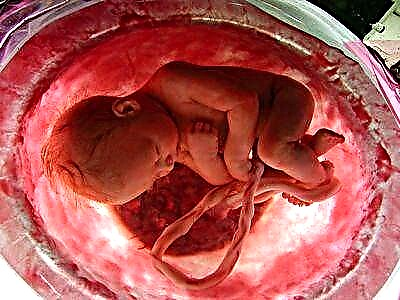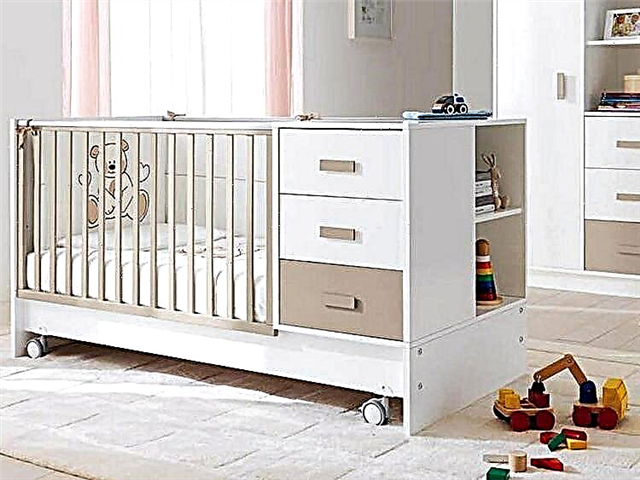Inflamed joints are one of the most significant problems in pediatrics and pediatric rheumatology. Recently, close attention has been directed to juvenile rheumatoid arthritis, but there has been a recent trend towards an increase in the incidence of other inflammatory joint pathologies in children and adolescents, including reactive arthropathies.
Inflamed joints are one of the most significant problems in pediatrics and pediatric rheumatology. Recently, close attention has been directed to juvenile rheumatoid arthritis, but there has been a recent trend towards an increase in the incidence of other inflammatory joint pathologies in children and adolescents, including reactive arthropathies.
Arthritis is a condition characterized by pain, stiffness, and swelling in one or more joints. This pathology can also affect other internal organs and the immune system. Arthritis can develop spontaneously or gradually. There are various forms of arthritis; reactive arthritis is one of them. This autoimmune condition occurs as a reaction to an infection in the child's body.
Reactive arthritis in children includes not only inflammation in the joints, but also affects the eyes and urinary tract. It usually occurs in adults, but sometimes it also affects children and babies. Reactive arthritis in the latter usually develops due to intestinal infection and sore throat.
Reactive arthritis was described by the German physician Hans Reiter in 1916 and for a time the condition was known as Reiter's syndrome. This eponym is no longer used because of Reiter's activities as a Nazi war criminal, and also because he was not the first to describe the disease and distort its mechanism of occurrence and development.

What are the reasons for developing reactive arthritis in children?
The mechanism of reactive arthritis in children is not yet fully understood. Doctors around the world are trying to find the root cause of this disease. The complexity of the search lies in the fact that young patients cannot always say exactly what and how they are in pain.
Infectious causes
In children, reactive arthritis develops several weeks after a urogenital or intestinal infection.
The causative agents of infection that are most often associated with the development of reactive arthritis in children:
- ureaplasma;
- chlamydia;
- salmonella;
- Yersinia;
- campylobacter;
- shigella.
In addition, in a separate group of children, reactive arthritis develops after a respiratory infection, which determines the significance and prevalence of these infections among children. There are familial cases of arthritis after respiratory infections in several children in the family. The main causes of this arthritis are streptococci, Chlamydia pneumoniae, and Mycoplasma pneumoniae.

Genetic factor
The genetic factor is believed to play a role, especially in children and infants. There are certain genetic markers that are much more common in children with reactive arthritis than in the healthy population. For example, the HLA-B27 gene is commonly seen in patients with reactive arthritis. However, even in children who have a genetic background that predisposes them to developing the disease, exposure to certain infections is necessary to initiate the onset of the disease.
Symptoms
Reactive arthritis in children usually develops 2 to 4 weeks after a genitourinary or intestinal infection (or possibly a chlamydial respiratory infection). About 10% of patients have no prior systemic infection. The classic triad of symptoms - noninfectious urethritis, arthritis, and conjunctivitis - occurs in only one third of patients with reactive arthritis.
In a large percentage of cases of reactive arthritis, conjunctivitis or urethritis occurred several weeks before the parents saw a specialist. They may not say so unless specifically asked. Many children had diseases of the musculoskeletal system. Unclear, seemingly unrelated complaints can sometimes obscure the underlying diagnosis.
The onset of reactive arthritis is usually acute and is characterized by malaise, fatigue, and fever.
The main symptom is asymmetrical, mainly lower, oligoarthritis (simultaneous damage to 2 - 3 joints). Myalgia (muscle pain) can be noticed early on. Asymmetric arthralgia (joint pain) and joint stiffness are occasionally noted, primarily in the knees, ankles, and feet (the wrists may be an early target). The joints are usually tender, warm, swollen, and sometimes red. The above symptoms may occur initially or several weeks after other signs of reactive arthritis appear. Migratory or symmetrical joint involvement has also been reported. Arthritis is usually in remission and rarely results in severe functional impairment. Muscle atrophy can develop in symptomatically severe cases.
Low back pain occurs in 50% of patients. Heel pain is also common.

Reactive arthritis following an infection of the urinary system and gastrointestinal tract may present initially as urethritis with frequent or impaired urination and discharge from the urethra; this urethritis may be mild or unnoticed. Urogenital symptoms caused by a urinary tract infection are found in 90% of patients with reactive arthritis.
In addition to conjunctivitis, ophthalmic symptoms of reactive arthritis include redness, burning and pain in the eyes, photophobia, and decreased vision (rare).
Patients may have mild recurrent abdominal pain after an episode of diarrhea.
Diagnosis of reactive arthritis
The diagnosis of reactive arthritis is clinical based on the results of the medical history of the physical examination. No laboratory test or imaging tests can diagnose reactive arthritis. No specific tests or markers developed.
There is a scoring system for diagnosing reactive arthritis. In this system, the presence of 2 or more of the following items (1 of which must relate to the state of the child's musculoskeletal system) will make it possible to establish a diagnosis:
- asymmetric oligoarthritis, mainly of the lower extremities;
- inflammation in the fingers, pain in the toes or heel;
- acute diarrhea within 1 month after the onset of arthritis;
- conjunctivitis or iritis (inflammation of the iris of the eye);
- urethritis.

To confirm the presence of inflammation in the body, a blood test will be useful, in particular, they pay attention to the erythrocyte sedimentation rate, which usually increases markedly in the acute phase, but later returns to the reference range when the inflammation subsides. The rheumatoid factor, usually present in children with rheumatoid arthritis, is negative in reactive arthritis. A blood test for the marker gene HLA-B27 is useful, especially in the diagnosis of patients with spinal disease. Other studies can be ordered to eliminate other possible diseases with similar symptoms.
X-rays of the spine or other joints will help detect characteristic inflammatory changes in these areas, but usually until the pathology reaches an advanced stage. Sometimes there are areas of atypical calcifications at the points where the tendons attach to the bones, indicating early inflammation in these areas. Patients with eye inflammation may require an ophthalmic assessment to document the degree of inflammation in the iris.

Stool culture may be performed to detect the presence of intestinal infections. Likewise, urine analysis and culture are necessary to detect bacterial infection in the urinary tract. Chlamydia should be looked for in every case of reactive arthritis.
Sometimes it is necessary to examine the fluid of the inflamed joint. The joint fluid will be tested for white blood cells and bacteria (to check for infection).
How is reactive arthritis in children treated?
There is no cure for reactive arthritis. Instead, treatment for reactive arthritis in children focuses on symptom relief and is based on the severity of the symptoms. Almost 2/3 of patients have a self-limiting course and do not need treatment other than supportive and symptomatic therapy.
Pharmacological therapy
NSAIDs (for example, indomethacin (approved from the age of 14) and naproxen (from the year)) are the mainstay of therapy for reactive arthritis. It has been shown that etretinate / acitretin reduces the required dose of NSAIDs. Sulfasalazine (children from 5 years) or methotrexate can be used for patients who do not experience relief from NSAIDs after 1 month of use or have contraindications to them. In addition, sulfasalazine-resistant reactive arthritis can be successfully treated with methotrexate.
Antibiotic treatment is given for urethritis, but usually not for reactive arthritis caused by an intestinal infection. In Chlamydia-induced reactive arthritis, some evidence suggests that long-term combination antibiotic therapy may be an effective treatment strategy.
Specific treatment of symptoms
Arthritis
Inflamed joints are best treated with aspirin or other short- to long-acting anti-inflammatory drugs (eg, indomethacin, naproxen). In one study, the patient disappeared symptoms after a 3-month course of aspirin, the dosage was gradually reduced, and the drug was eventually withdrawn. The combination of NSAIDs has been reported to be effective in severe cases. No published data suggests that any NSAID is more effective or less toxic than another.
According to culture results, a short course of antibiotics may be required; however, treatment cannot change the course of the disease. Long-term use of antibiotics to treat joint symptoms does not offer any established benefits.

Conjunctivitis and uveitis (inflammation of the choroid)
Transient and mild conjunctivitis usually goes untreated. Mydriatics (eg, atropine) with topical corticosteroids may be given to patients with acute uveitis. Patients with recurrent conjunctivitis may require systemic therapy with corticosteroids and immunomodulators to preserve vision and prevent eye disease.
Urethritis and gastroenteritis
Antibiotics are used to treat urethritis and gastroenteritis, according to culture and antibacterial sensitivity. In general, urethritis can be treated with a 7 to 10 day course of erythromycin or tetracycline. Antibiotic therapy for enteritis remains a matter of debate. No data indicate that antibiotic therapy is beneficial for reactive arthritis induced by intestinal tract infection.
Long-term antibiotic therapy may be warranted in cases of post-streptococcal reactive arthritis; however, this is currently a controversial topic.
Conclusion
Most cases of reactive arthritis do not last long. Symptoms gradually subside after a few weeks or months. Treatment is aimed at relieving the child of pain and making it easier to move.
Rest and sleep are important aspects of treatment. After a few days, gentle physical therapy exercises will help improve movement.




